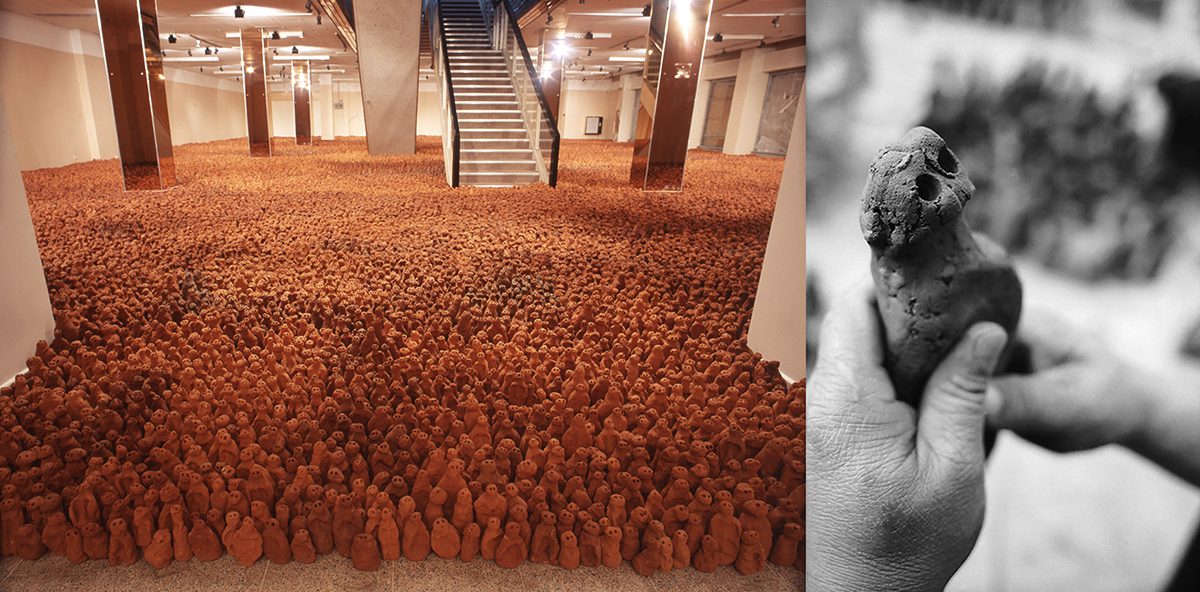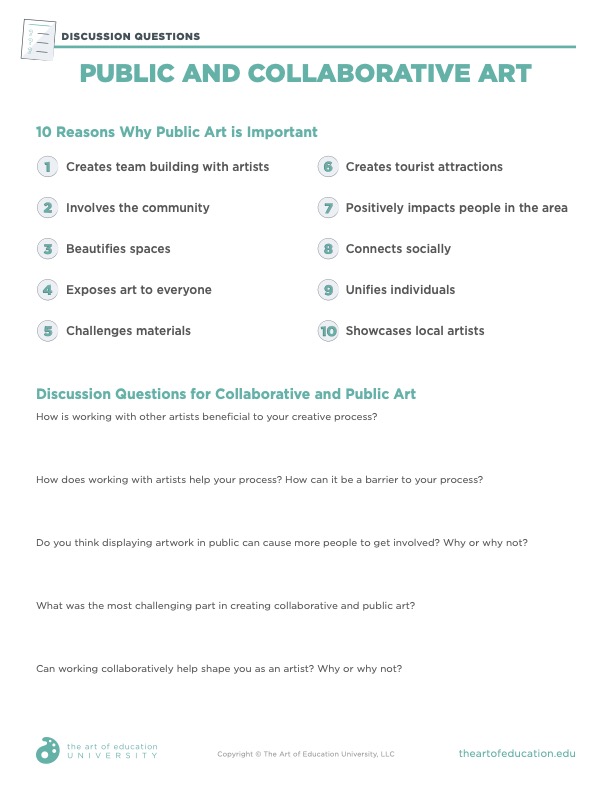Installation art is exciting and thought-provoking and can seem quite complicated for the art room. However, a focus on artmaking experiences that use multiples is an invitation for everyone in the class to participate. Students can work on different pieces that combine to form a final installation. Learning extends beyond the art room walls when students see what is possible when everyone works together.
But where do you begin? Introducing definitions, possibilities, and practical applications may start the ball rolling. Get ready for fun and meaningful installation art that focuses on building community.
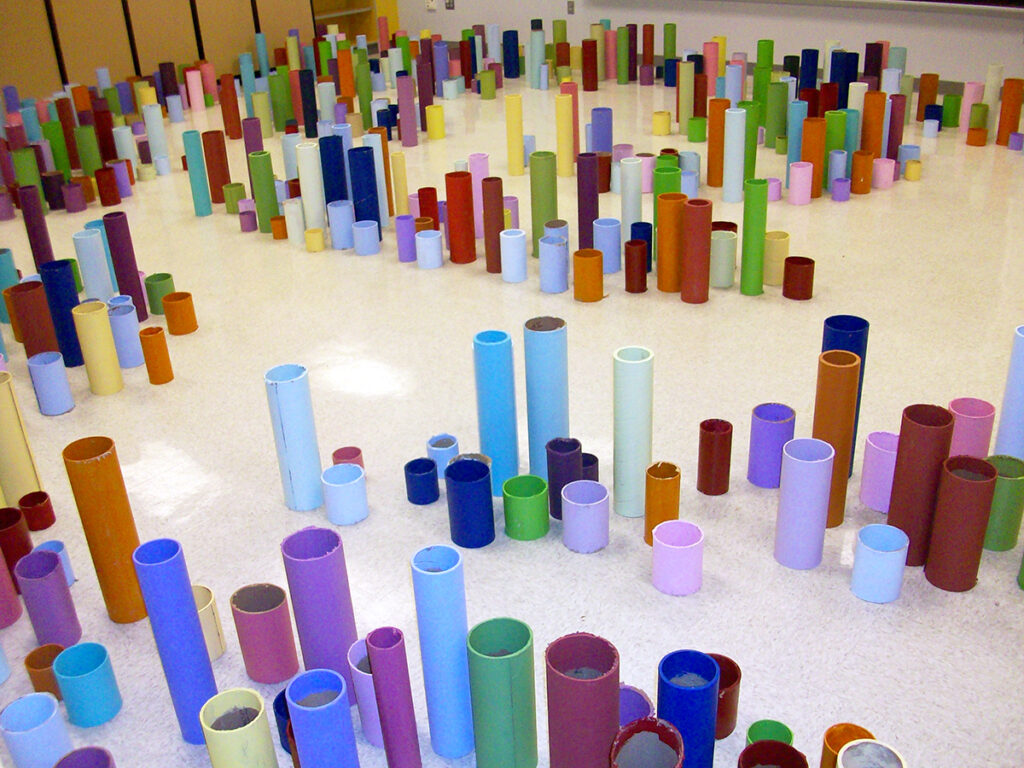
What is installation art?
Installation art can take on many different forms, making giving students a concrete picture challenging. Still, it is important to establish a student-friendly definition for when students study and create this unique art form. Tate defines installation art as “large-scale, mixed-media constructions, often designed for a specific place or for a temporary period of time.” A more simplified description for younger students can be defined as art that surrounds the viewer and creates its own environment. When students have a common understanding of the type of artwork they are making, they can better consider the possibilities.
As mentioned above, installation art is a wonderful opportunity to include all students in your class or school. It is also a great way to build a community outside of school walls by inviting in local artists, businesses, and groups. Download this complimentary PDF from our Innovative Installations Lesson in FLEX Curriculum. In it, you will find discussion questions to help your students consider the connections between art and community.
Download Now!
Here are three different kinds of fields transformed by installation art:
1. Corn
Malcolm Cochran’s Field of Corn (With Osage Orange Trees) in Columbus, Ohio, is a real field home to 109 six-foot-tall concrete ears of corn. The installation includes text explaining the history of corn production, yet the scale is what delights the viewer. Many public outdoor art installations engage viewers to play with and question their surroundings in new ways. Investigate local art installations near you to introduce this in your art room and plan future field trips.
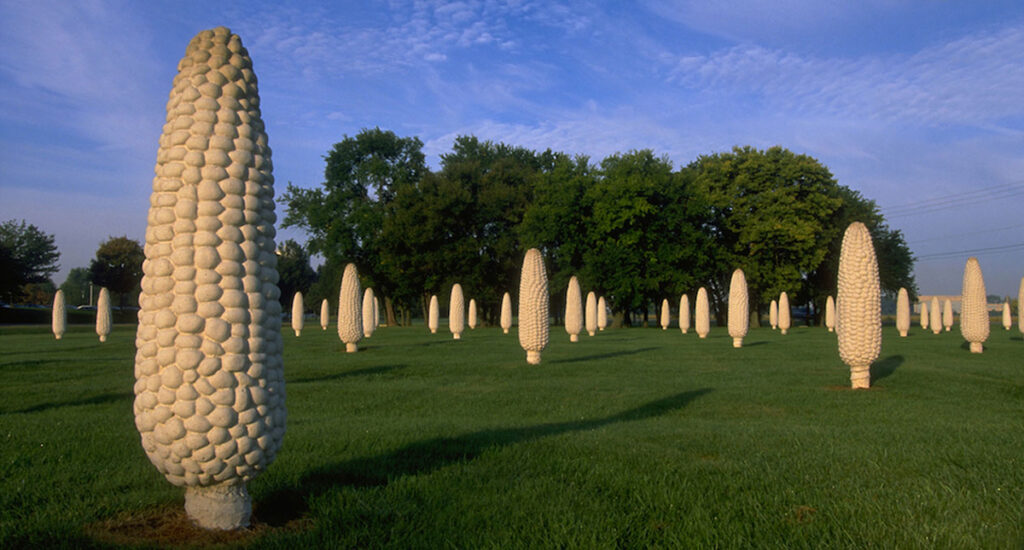
2. Figures
Antony Gormley’s Field installations are quite different than Cochran’s. His installations take up space within an indoor gallery and are not agricultural. These installations are the work of countless people striving for a singular goal. He teaches volunteers how to form simple hand-sized terra cotta figures. The 210,000 pieces are combined in a gallery with their tiny eyes fixed on the viewer. The forms look back in vulnerability and reference the community’s collective strength.
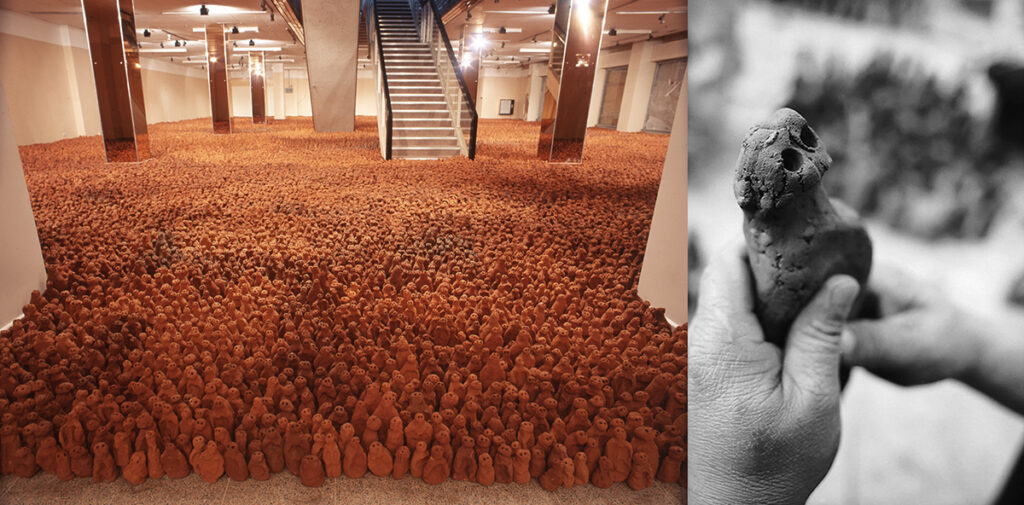
Seeing images of American Field for the first time, I knew that this was an installation possibility for my K–5 students. Each student created ten or more figures out of red clay, courtesy of grant funding. For our school art show, the little figures were assembled around the lobby. The installation spoke to the strength of our school community as well as the individuality of each small clay figure. Even though the characters looked a little more like the poor unfortunate souls from The Little Mermaid, the process was an important step. It challenged student and community notions of what elementary art can be.
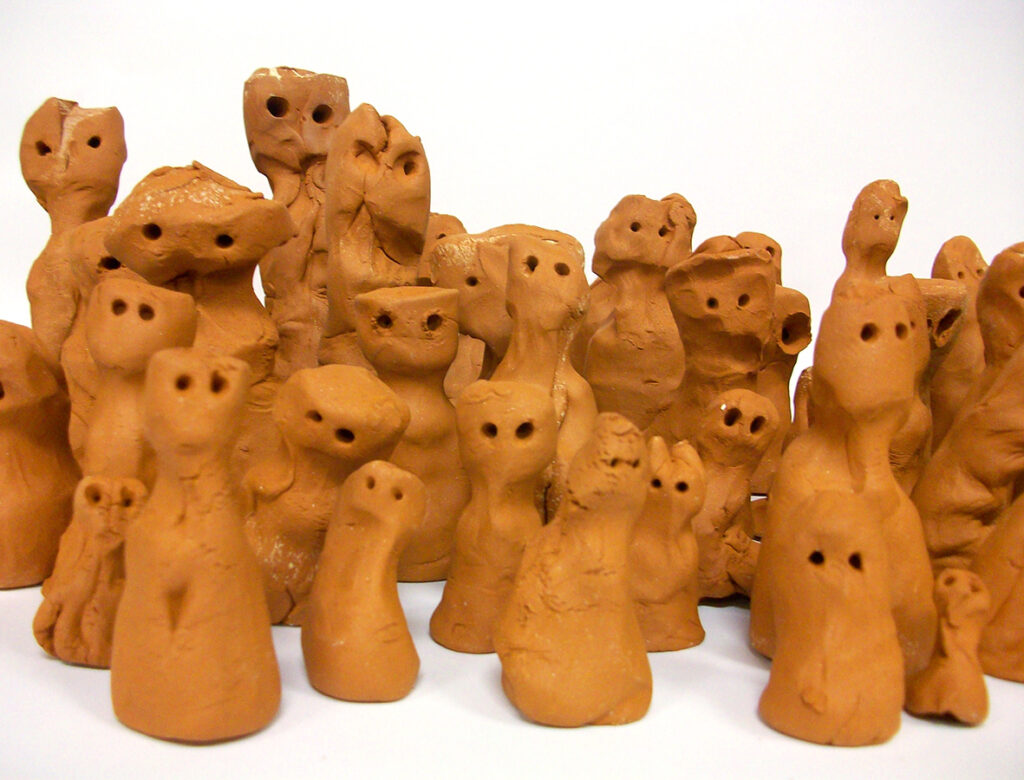
3. Flags
Susanne Brennan Firstenberg, a Washington, D.C.-based artist, creates installations inspired by social issues and current events. Her recent work continues to grow as a field of white flags takes over the National Mall. In this work titled, In America. How Could This Happen… each flag represents a life lost to COVID in America. The work can prompt critical discussions about how art and life reflect one another.

How can you use collected materials?
Installation art welcomes the use of mixed media and upcycled materials found in or donated to the art room. The donation of large cardboard tubes inspired a school-wide art installation for my students. Using a chop saw, I cut the tubes in varying heights so that kindergartners received the smallest tubes and fifth graders the tallest tubes. Students painted their tubes in a color they thought best represented them. Once finished, the forms were placed by students in a common space. Walkways through the middle of the collection of cylinders allowed viewers to feel like they were a part of the installation itself. The simple tubes form an abstract and colorful portrait of the school community. A similar experience can be replicated using almost anything found in multiples.
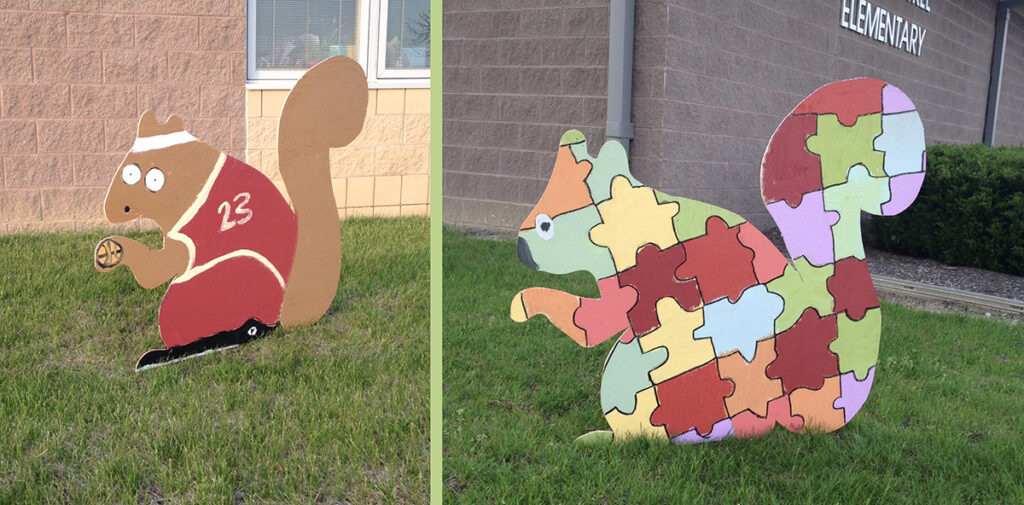
Yayoi Kusama’s polka dots have captivated the art world as well as students of all ages. Her Obliteration Rooms invite viewers to apply circle stickers to every surface of a completely white room. Though the custodian might lose their mind over a classroom covered in small stickers, a cardboard construction or a series of sculptures could provide the base structure for multi-colored dots.
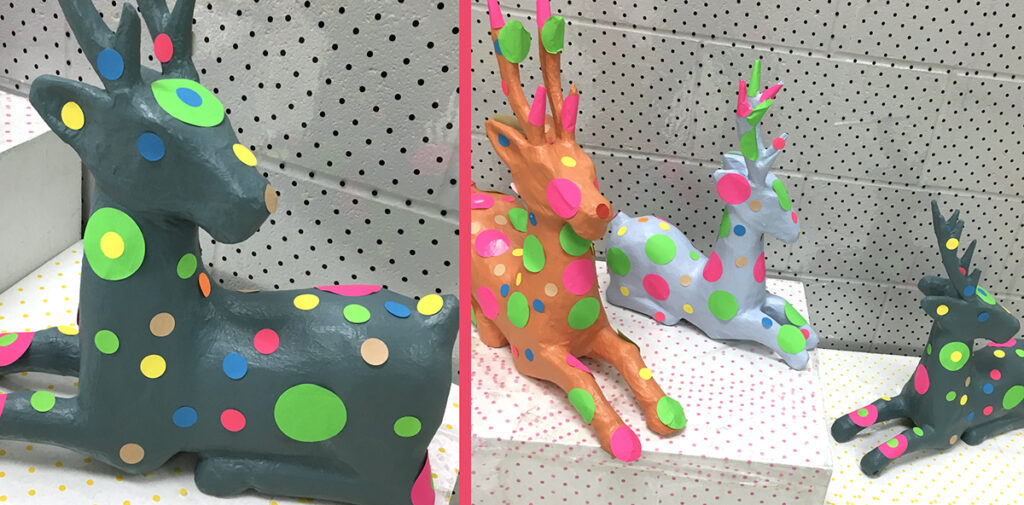
Cows, dinos, and letters—oh my! How can hidden installations inspire hope?
The cows of Chicago, the dinosaurs of Pittsburgh, or the guitars of Cleveland are all examples of large sculptures decorated by artists and hidden throughout the city. Though this may seem like a challenging installation of sculptures to form at a school, it is not impossible. Plywood or sheets of insulation foam can be cut with a jigsaw into shapes of animals or mascots and placed throughout the school’s campus. Or students can create and hide small paper forms throughout the school building for others to enjoy. A scavenger hunt to discover hidden artwork is a means to engage and enthuse everyone.
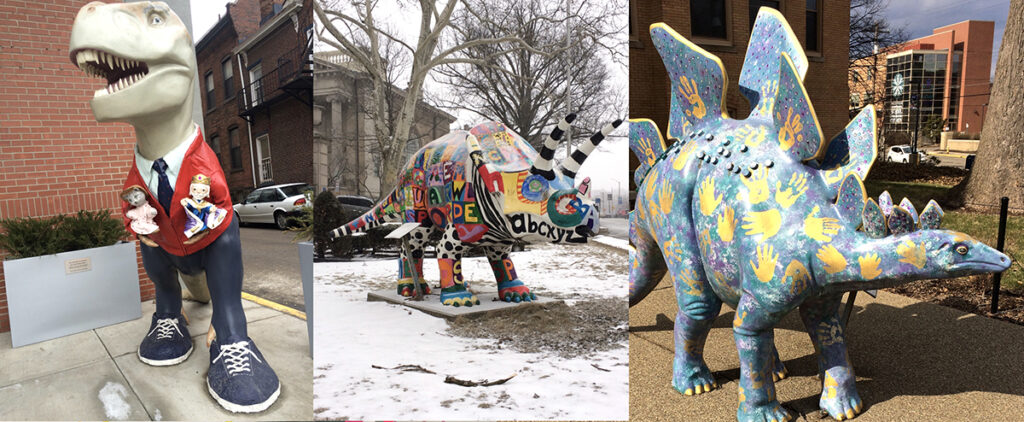
Installation art can be fun and playful but also inspire hope. Japanese artist Chiharu Shiota’s installation includes 10,000 letters from people worldwide sharing their hopes for the future. The letters are suspended amongst red strings. The work can inspire discussions about loss, hope, and the future. Students may develop their own plans for potential installation projects founded on their hopes and dreams. To see how seeds of hope can sprout into possibilities, check out this article exploring the duality of hopefulness and disappointment in artmaking.
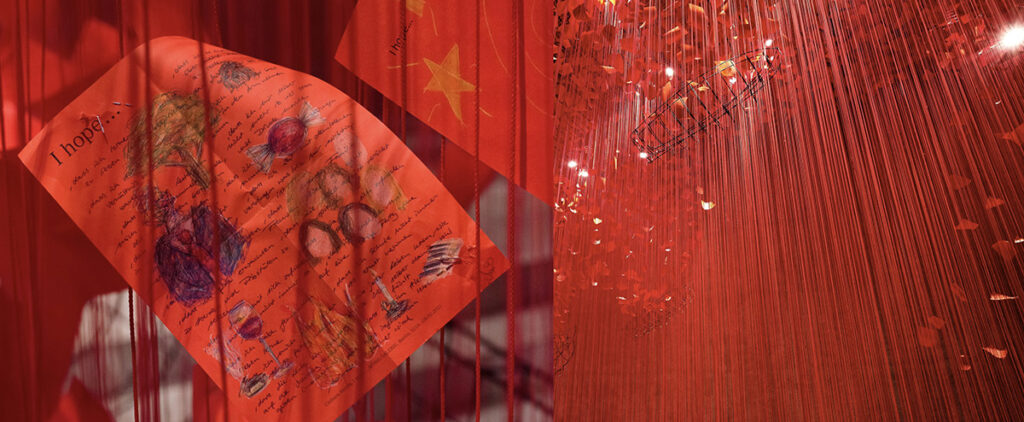
Are you looking for more installation artists and ideas?
The unique work of installation artists can inspire student work, discussions, and community building. These artists can also become part of an artist of the month board for students to reference.
Here are a few more artists to investigate:
Here are two compilation articles to peruse with even more motivational works:
Here are some great Lessons in FLEX Curriculum that can give you a headstart with planning and prep if you are unsure where to start:
- Creating Public Art
- Disruption
- Place-Making
- Nature’s Stained Glass
Installation art can engage students to consider how art jumps off the page and takes over an entire environment. Installation art is conducive to including all students, exploring current events, and inspiring hope. Take a look around your art room and consider the donations of multiples that enter your physical space and how your students can transform them into something completely new. Use installation art in your school as an exciting opportunity for community building.
What local outdoor art installations should students be familiar with and be invited to visit in your area?
What supplies in your art room already exist for a potential installation?
How can a study of installation art support your school’s particular needs for community building?
Magazine articles and podcasts are opinions of professional education contributors and do not necessarily represent the position of the Art of Education University (AOEU) or its academic offerings. Contributors use terms in the way they are most often talked about in the scope of their educational experiences.
